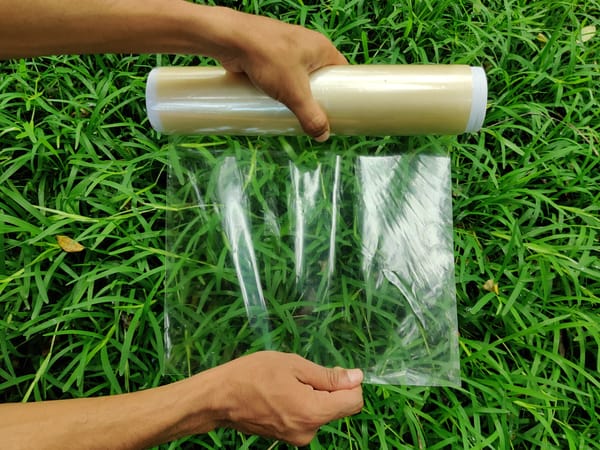What Can Companies Learn From Sustainability in Sports?
As we approach Green Sports Day, consider how those in the sports world approach areas like event sustainability.

Sports are more than games. They can bring communities together and teach valuable lessons, like the importance of dedication and perseverance. And they can also exemplify ways to improve sustainability.
This Friday, October 6, 2023, marks the eighth annual Green Sports Day, a nationwide effort to promote sustainability in sports. From professional sports teams to college athletic departments to stadium vendors, many organizations are demonstrating that the grass really can be greener.
While throwing a ball around doesn’t exactly scream climate crisis, sports can be powerful symbols, and the environmental impact of sporting events can be more than you’d think.
Accounting for Event Emissions
When companies host or attend conferences, retreats, or other events, the environmental impact can be high. It’s not uncommon to see large amounts of food waste, mass-produced swag that ends up getting thrown out, and large-scale energy usage to power these events.
The same types of sustainability issues are prevalent at sporting events. But some organizations are working to change that. For example, the Portland Trail Blazers have taken a number of sustainability steps within the team's own arena. The Moda Center, where the Blazers plays, became the first pro sports arena to earn LEED Platinum certification in 2019, and they're rolling out new initiatives, like serving alcohol in reusable cups.
The team reports that could cut out half a million single-use cups per season. And they’re backing their work up with data, such as by pointing to a lifecycle analysis from Upstream, showing that reusing cups more than six times nets environmental benefits, even when accounting for the impact of reuse, such as washing cups.
Companies outside of sports can similarly get behind reusables in their own offices and at events, while making sure that doing so is backed up by research and identified needs. If your employees are already bringing in their own mugs for your office coffee machine, for example, then giving them another reusable cup could potentially have a net negative impact.
Beyond dishware, the environmental impact of events typically extends much further. Consider the College Football Playoff (CFP) National Championship. The CFP runs a Playoff Green sustainability initiative that aims to reduce the environmental impact of the game and its associated activities.
This year, the Green Sports Alliance, one of the organizations behind Playoff Green, engaged RyeStrategy to conduct carbon accounting for the whole event, from load-in to load-out.
In conducting this greenhouse gas accounting, RyeStrategy looked at areas such as electricity usage, fuels for generators used at tailgates, and emissions from food and beverages, including water. But by far the biggest greenhouse gas emissions contributor was fan travel.
Without fan travel, the CFP event had a carbon footprint of 1,352.75 metric tons, which is equivalent to a year’s worth of driving from 301 gas-powered cars. But fan travel, due to things like fans flying in for the game, amounted to 35,598.58 metric tons, or nearly 8,000 gas-powered cars for a year.
For companies hosting events, whether or not you’re in sports, it’s important to consider this full impact. When attendees fly in for a conference, for example, those transportation emissions can tower over on-site ones.
Travel is “definitely a trickier one to directly calculate and, of course, takes a little bit more estimation than maybe a utility bill would. But there's a huge chunk of emissions there that are happening because of these events,” says Cooper Wechkin, founder and CEO of RyeStrategy.
He adds that while it can be easy to just focus on internal travel or operations, that “all kind of gets blown out of the water once you bring that fan travel or attendee travel aspect into the picture.”
Taking Accountability
Mitigating these emissions for an in-person event can be hard. The CFP did purchase carbon offsets and renewable energy credits equivalent to 100% of the calculated non-fan-travel emissions and 7% of fan travel.
They also implemented a wide range of sustainability initiatives to reduce impact in the first place, such as choosing food and beverage vendors that aligned with local composting and recycling infrastructure, along with donating food and other materials to avoid waste. Still, some emissions, like travel, are hard to avoid.
“Offsets are a great starting place to counterbalance what's already happened. And, of course, you want to make sure that they're high quality and vetted projects,” says Wechkin. “But then I think the second aspect is, when you look at the event itself, starting to figure out what are those ways that you mitigate the travel within the city or within the location that the event’s at,” such as offering opportunities to bus attendees around rather than having them drive separately.
And while going 100% virtual isn’t practical for something like a sporting event that’s meant to have a live audience, some company events or meetings could be, he adds.
If companies do want the in-person experience, then it’s important to account for that environmental impact. It’s easy to pass the buck to attendees, just like it’s easy to assume that suppliers should take the lead on sustainability initiatives.
But companies that want to position themselves as sustainability leaders should find ways to reduce direct emissions while facilitating third-party reductions. Perhaps splitting events into smaller meetups in different cities could mitigate attendee travel, for example.
At the very least, companies should take accountability for these emissions and encourage attendees (or suppliers, customers, etc.) to make cuts in other practical areas. Companies can take a page out of the sports sector’s playbook in terms of sharing values and leading others toward new behaviors.
As a whole, the sports industry tends to have a strong platform to communicate on sustainability and “inspire fans to take action,” says Wechkin.
Similarly, companies can use their platforms to inspire their own fans, like customers. They can also set a good example for industry peers, suppliers, and other stakeholders to similarly improve sustainability, whether that’s at an event, in the office, or anywhere else.
Disclosure: Carbon Neutral Copy's parent company, JournoContent LLC, has clients involved in sustainability-related areas, including offsets, among others. The owner of Carbon Neutral Copy, Jacob (Jake) Safane, has investments in sustainability-related companies, including renewable energy ones, among others.
As such, conflicts of interest related to these and other investments/business relationships, even if unintended, may exist at times. Please email info@carbonneutralcopy.com if you'd like further clarification on any issues.





